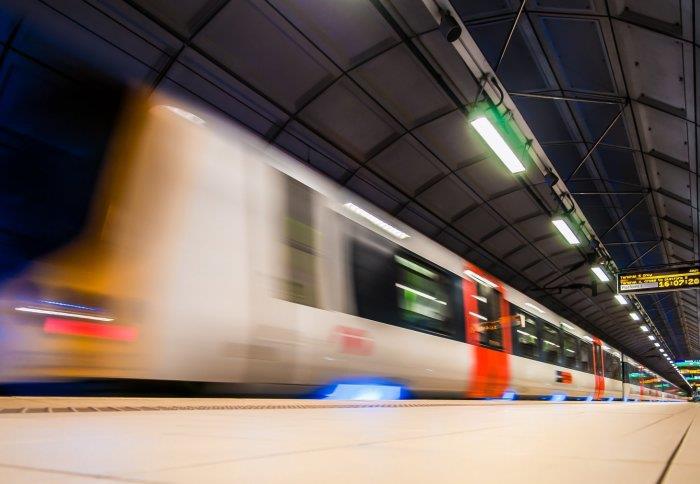
TPS will be working with Imperial College London, 10:10, Network Rail and many other partners to investigate the use of track-side solar panels to power trains.
Network Rail is currently investing billions in electrifying the UK’s railways, in bid to significantly reduce the number of trains running on diesel fuel, curbing costs, air pollution, and greenhouse gas emissions in the process.
The project will look at connecting solar panels directly to the lines that provide power to trains, a move that would bypass the electricity grid in order to more efficiently manage power demand from trains. It is the first in the world to test the completely unique and innovative idea, which could have a wide impact with commercial applications on electrified rail networks all over the world.
Initially the project will look at the feasibility of converting ‘third rail systems’. These supply electricity to the locomotive through a power line running close to the ground. They have the advantage of matching the way electricity is supplied by solar panels as direct current, and using a similar voltage to the rail network of 750V DC.
There are several major technical hurdles that will have to be addressed before the system could be accepted for operation, for instance, maintenance personnel safety. Interfacing a PV system to a utility network has taken many years to develop protocols and algorithms, which allow the PV system to come online when the grid is healthy and offline if the local grid has become disconnected from the main utility network.
TPS excels in this area, it has a staff member Tony Lakin who is the UK expert to the International Standards Committee, IEC TC82 who will provide the specialist expertise. Tony said: "This is a requirement because the grid must not be able to power back up again autonomously, if an engineer has disconnected the mains supply to enable safe working on the disconnected area. The same considerations apply to the third rail system; you do not want the local energy system repowering the rail if remedial work is being carried out on it, the maintenance engineers would not be happy."
Another consideration is that third rail on most rail networks is also used for signalling purposes, so injecting power into this rail raises electromagnetic compatibility issues. TPS is ideally placed to solve these problems because it already manufactures convertors to pick up power from the third rail and distribute it to on-board systems within the rail vehicle.
The interface to the rail forms a key role in their design process and TPS have many years of know-how in implementing safe and successful systems. TPS experience combined with Imperial’s capability gives an unparallelled amount of engineering expertise to this project.
Imperial’s experience is on integration and management of renewable energy sources in electricity grids, while TPS work on the distribution and management of power in the railway sector. "TPS and Imperial really give us the full technical package," says Leo. "We couldn’t have better partners to work out how we can integrate solar power with our trains."
The Renewable Traction project will start on 1 February 2017. It is a collaboration between 10:10, Turbo Power Systems (TPS), Community Energy South, Network Rail and Energy Futures Lab. It is funded through Innovate UK’s Energy Game Changers programme. It will release the results of their feasibility study in late 2017.
